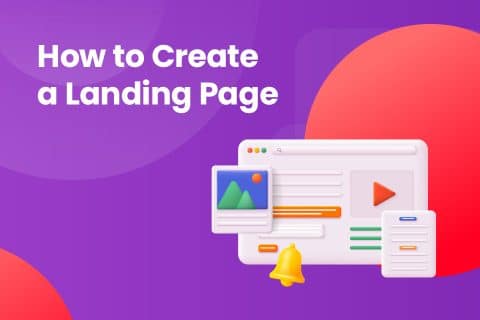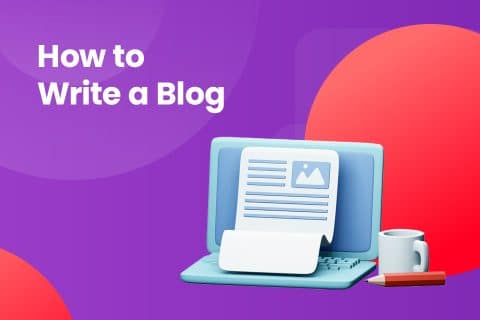The process of creating a website is quick and easy. However, we can’t say the same thing about the planning and design of websites. Choosing a well-designed layout for your website might be a long and complicated process. There are many website layouts on the internet that you may choose. But how can we ensure that our chosen design is suitable for our website? How can we ensure that our layout will make our content shine?
You may think you may randomly choose a simple layout and move on. However, it is not that simple. Website layouts, as the structures of your website, determine the quality of user experience you provide to your visitors.
For this reason, in this article, we will explain the best website layouts and provide examples to decide which website layout you will use. Let’s start by looking at the definition of website layouts and why they are vital for your websites.
Why Do I Need a Well-Designed Website Layout?
A website layout is the arrangement of all the visual elements in your website. It is the combination of columns, colors, space, and placement of text, logos, links, photos, or anything else that contributes to the visual appeal of your website.
A website layout is the first thing people see when they visit your website. It’s your biggest chance to make a strong first impression. So, we might agree that it’s difficult to overlook its significance.
While we covered the definition of website layouts, considering their significance is also crucial. You may be wondering why you need a website layout in the first place, but there are numerous advantages to planning and designing one. We divided these advantages into two categories:

They Never Grow Old
A website design never goes out of style. Once you decide on a website layout, you can update it and make changes to improve the user experience. In other words, having a well-designed website layout allows you to use it for a long time.
You get to use them, work on them, and personalize them. This way, people associate that specific layout with your website and content.
They Have The Potential to Be User-friendly
People come to your website because of the content. However, no matter how great your content is, if your website design is unappealing, people will not stay on your website. The most user-friendly website layouts are the most appealing. They provide better navigation and let you know what to expect from them.
It is not enough to know how to create a website; you should also know how to create a user-friendly website to attract visitors. A header, good navigation through sections, a website footer, and a simple but functional design should all be in a user-friendly layout. It should also address “What’s on this website for me?” and “Why should I stay here?”
The Best Website Layouts
Website layouts come in several different forms. You might choose a simple or complex layout based on your content and business plan, or you can mix a few different layouts.
Let’s look at the best website layouts on the internet:

Single Column Layout
One of the simplest website layouts to use is the single-column layout. This layout is ideal if you plan to use long text or paragraphs on your website. If you’re starting a website where you will publish your writing, a single-column layout might be the way to go.
Two Columns Layout
You might want your website visitors to see more as they scroll down. Moreover, you might want to use a mixture of images and text, with the content appearing in multiple columns. You might need a two-column layout if all of this is your preference.
While experts recommend a single-column layout for lengthy texts to improve user experience, you may choose a two-column layout for short text with graphics.
Full-Screen Layout
The full-screen layout uses your website’s space, allowing you to fill it with all your content. This layout is ideal if you want to show a complete page of data, images, and charts on your website.
You may include links like the homepage, contact, and search on your full-screen layout. Using this layout is suggested if you’re launching a website for your portfolio.
Magazine Layout
This design is similar to the appearance of magazines and newspapers. It has headlines, photos, and a narrative to deliver the news. As the name implies, this design may be seen in magazines and news websites.
You may use this layout to share your top stories, which might take up most of your website. Other stories or news may occupy a smaller amount of space.
Card-Based Layout
The card-based layout is built on compressing much information onto a single page. If you want visitors to choose from several options, a card-based layout might be a good choice for your website.
Each card on this website layout might contain a picture, a title, and information. Your visitors may choose from the options you provide.
Card-based layouts seem to become more popular than traditional layouts now. This design is popular on social media platforms, online stores, and design projects.
Text-Based Layout
A text-based layout might be a better solution for you if your problem is finding a way to highlight your content. The text-based layout is a quick and easy approach to splitting your content into columns. If you divide it into multiple columns, you might use a different background color for each page section.
This design aims to emphasize the text and typography above images. The typography and typefaces you use in a text-based layout are where you can express yourself and show your creativity.
Z-Pattern Layout
The Z-pattern layout is built on the eye’s natural reading movement, from left to right and top to bottom. The name of this layout is inspired by the Z shape created by this layout. Therefore, using the Z-pattern to design a website layout gives users a sense of where to explore content.
You may set your logo, homepage, and navigation menu from left to right at the top of a Z-pattern layout. You may place the information you want to provide your viewers from the top to the bottom of the Z-pattern. Furthermore, this area might be a great place to put your images and content.
The bottom half of the Z-pattern, from left to right, may contain anything that will compel your visitors to take action. This layout has the advantage of controlling eye movement. As a result, you have greater control over where your audience sees your information and when they take action.
F-Pattern Layout
Like the Z-pattern layout, this website layout is based on eye movement while scanning a website. If a website is text-heavy, we tend to scan it using the F-shape movement. This website layout uses this approach.
The F-pattern layout places the crucial information following the F shape, so we won’t miss anything important while scanning the webpage. Important text, headlines, and relevant images may all be placed at the top of an F-pattern layout.
The left side of the F-pattern may include numbers and buttons to draw viewers’ attention. If you’re a blogger or writer, you may prefer the F-pattern layout because it’s ideal for text-heavy websites.
Asymmetrical Layout
The asymmetrical layout splits the screen into parts as well. The distinction in this arrangement is that the screen is divided into pieces that are not equally spaced. It might give your website a new look and allow you to highlight the content you want people to pay attention to.
You have an impressive website but need to learn how to use it efficiently and attract customers? You are in the right place. There is a marketing tac...
Suppose you are beginning the journey as a freelancer or web designer. In that case, the most crucial thing that you need is creating a portfolio. Esp...
While customizing an asymmetrical layout, you may put the content you want to stand out in the large section of the screen and other information in the small part. You will find that your visitors notice the elements you wish to emphasize in this way.
The Best Website Design Real-Life Examples
We went over the best website layouts that attract website designers’ attention. Although you may have your pick based on your content, you may still wonder how they appear in real-life examples. If you’re curious about how these layouts work on real-life websites, take a look at the examples below:
Unsurprisingly, card-based layouts are popular among the world’s most well-known websites, such as Google, Pinterest, and Instagram. As one of the most popular image-sharing websites, Pinterest combines images, titles, and descriptions into cards, allowing users to focus on the main elements.

Each card has an image that takes up most of the space, info, and a link. This layout allows users to concentrate on the main aspects of the content and choose from different options.
Time
Time uses a magazine layout on its website to share world news, images, and videos with people worldwide. Time’s website reflects printed media as text-heavy with large headlines and relevant images.

When you glance at the layout of its website, you’ll notice that it has a headline, top story, and news that you may look at later. It clearly shows an excellent example of a modern magazine layout.
Facebook’s homepage is a great example of the Z-pattern layout because it highlights the brand’s key elements. The Facebook homepage has a headline you can scan from left to right. The logo is on the left side of the headline, and a log-in button is on the right.

Starting at the top and going down, you’ll see that the page contains a sign-in section and minimal text. This layout may encourage users to log in or create an account if they don’t already have one. As a result, the Z-shape pattern helps to draw attention to the images and links on Facebook, as the name implies.
Fresh Books
Fresh Books’ homepage is an excellent example of an F-pattern layout since it focuses on the F shape of eye movement. It includes left-to-right navigation links at the top, minimal text, and a sign-in button on the left side from top to bottom.

As mentioned in this article, the F-pattern layout follows the natural movement of human eyes and directs your attention to the main elements on the homepage.
Netflix
The Netflix homepage is an example of a full-screen layout because it only has a selection of full-screen images and a sign-up button. It has a simple design and seeks to provide content advice through an image that fills the screen.

Besides the image, the only item on the homepage is a link to log in or sign up using your email address. So, it’s an ideal illustration of how a full-screen layout might seem on a real-life website.
Conclusion
In conclusion, we demonstrated the best website layouts with examples in this article. Furthermore, we discussed the most popular website layouts and provided examples from real-life scenarios. We hope this article gave you some insight into selecting the best website layout for your brand.
You may check out these website layouts and customize them to your liking, regardless of the content you plan to share on your website. Remember that customizing them and making them unique to your content will help you stand out from the crowd.





No comments to show.